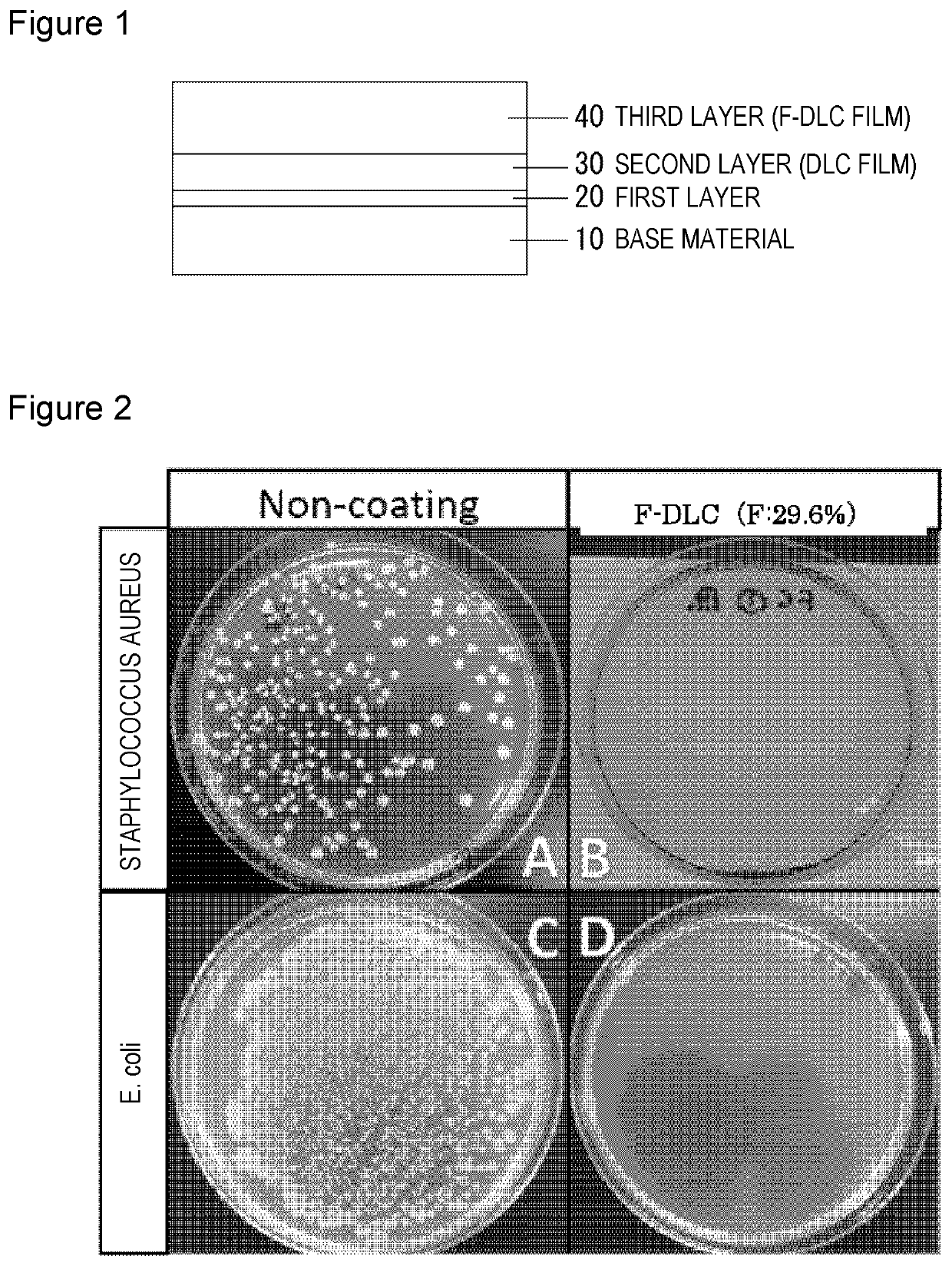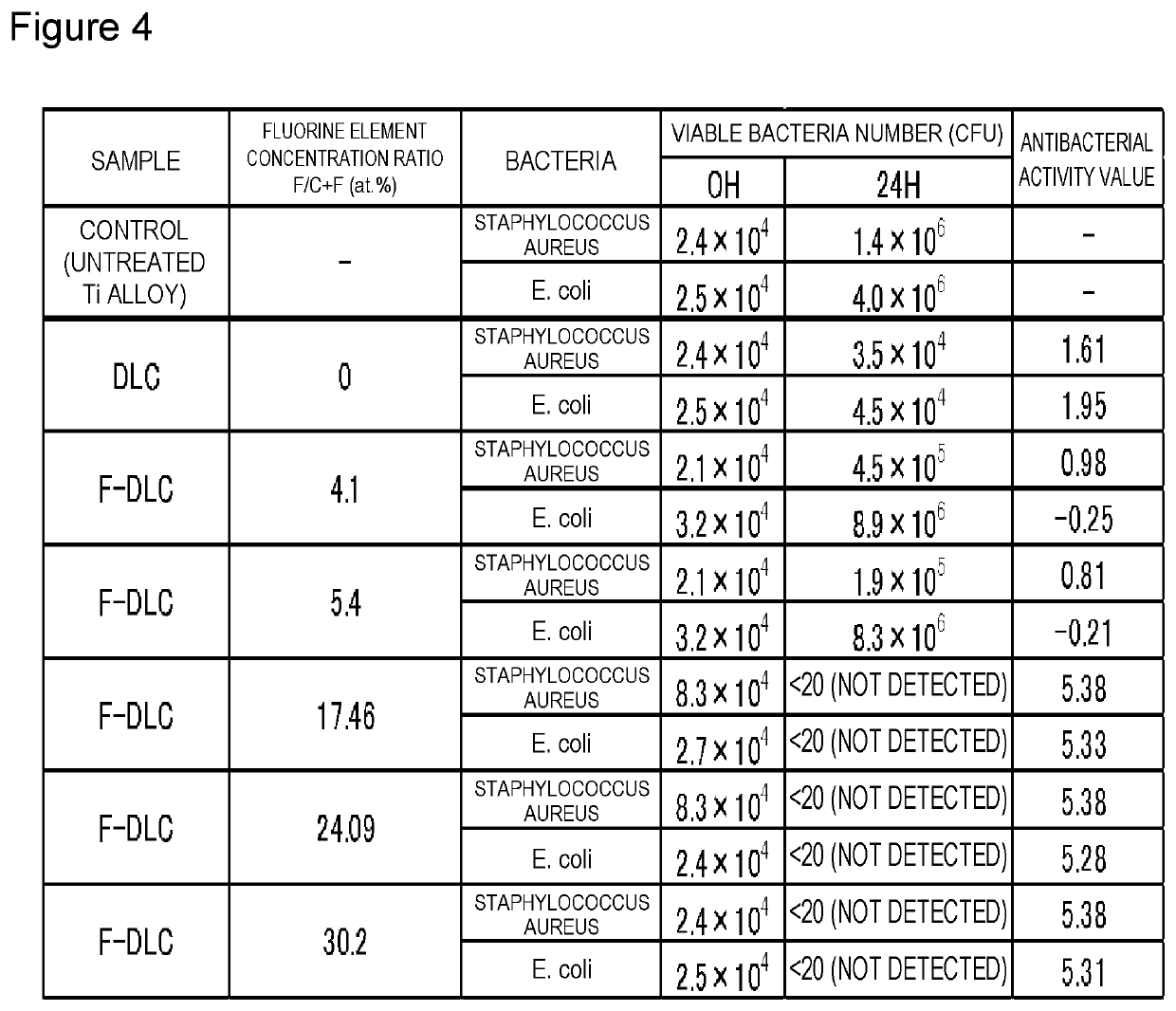Antibacterial member
a technology of antibacterial and member, which is applied in the field of antibacterial members, can solve the problems of toxicity and allergy, high resistance, and difficulty in medical treatment, and achieve the effects of high antibacterial property and osteoconductive property, high osteoconductive property, and maintaining wear resistance and close conta
- Summary
- Abstract
- Description
- Claims
- Application Information
AI Technical Summary
Benefits of technology
Problems solved by technology
Method used
Image
Examples
example 1
[Deposition Method]
[0059]In the present example, a DLC film and an F-DLC film were formed by the high-frequency plasma CVD method (P-CVD method).
[0060]Specifically, the P-CVD method of an ICP scheme in which high-frequency power (13.54 MHz) is applied to a loop antenna was used. First, the outermost surface was etched by Ar ions. Then, a hydrogenated silicon carbide (SiC:H) film was deposited as the first layer by using tetramethylsilane (TMS) as a raw material. Then, a DLC film containing no additive such as fluorine was formed as the second layer by using acetylene (C2H2). Thereafter, an F-DLC film was formed as the third layer by using gas as mixture of propane octafluoride (C3F8) and acetylene at a predetermined ratio.
[0061]Normally, when C3F8 is used, the concentration of fluorine is low as compared to CF4 and C2F6, which are typically used (because the concentration of fluorine depends on the element ratio of the gas). Thus, deposition conditions were optimized as follows to a...
example 2
[Mottled F-DLC Film]
[0131]The F-DLC film of the present invention maintains its functionalities even in a mottled pattern.
[0132]In the mottled pattern, the surface of the base material includes a region in which the F-DLC film exists and a region in which no F-DLC film exists in mixture. In the region in which no F-DLC film exists, the base material or the intermediate layer is exposed with no F-DLC layer, and thus no high antibacterial property is obtained.
[0133]Typically, no antibacterial effect is obtained at a part provided with no antibacterial treatment, and thus a sufficient antibacterial property is not obtained as a whole. However, according to the present invention, the F-DLC film has an extremely high antibacterial property and thus maintains a high antibacterial property as a whole in a mottled pattern. In addition, when the base material largely deforms, the film in a mottled pattern is likely to follow the deformation without peeling, thereby achieving higher durabilit...
PUM
| Property | Measurement | Unit |
|---|---|---|
| bias voltage | aaaaa | aaaaa |
| pressure | aaaaa | aaaaa |
| thickness | aaaaa | aaaaa |
Abstract
Description
Claims
Application Information
 Login to View More
Login to View More - R&D
- Intellectual Property
- Life Sciences
- Materials
- Tech Scout
- Unparalleled Data Quality
- Higher Quality Content
- 60% Fewer Hallucinations
Browse by: Latest US Patents, China's latest patents, Technical Efficacy Thesaurus, Application Domain, Technology Topic, Popular Technical Reports.
© 2025 PatSnap. All rights reserved.Legal|Privacy policy|Modern Slavery Act Transparency Statement|Sitemap|About US| Contact US: help@patsnap.com



